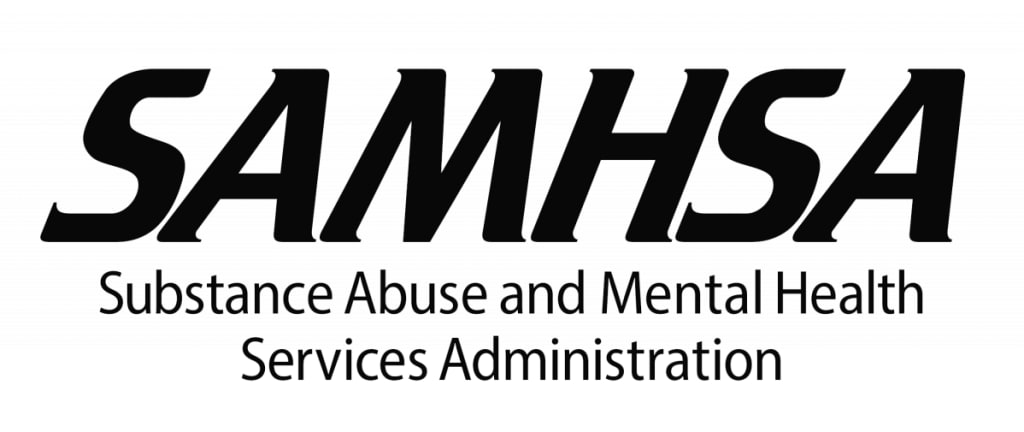SAMHSA Drug Test Guidelines
A Comprehensive Guide to SAMHSA Drug Test Guidelines: Understanding, Types, Procedures, and Implications

Drug testing plays a significant role in various areas of society, including the workplace, criminal justice system, and athletics. The Substance Abuse and Mental Health Services Administration (SAMHSA) is an agency within the U.S. Department of Health and Human Services that sets guidelines for drug testing in these domains.
Understanding the guidelines and procedures involved in SAMHSA drug tests is crucial for individuals and organizations involved in drug testing.
Understanding SAMHSA Drug Tests
SAMHSA drug tests are designed to detect the presence of illicit substances and certain medications in biological specimens. The most common specimens used for testing include urine, hair, oral fluid, and sweat. These tests provide objective evidence of recent substance use and can help identify individuals who may require intervention or face consequences for violating drug policies.
Different Types of SAMHSA Drug Tests
Urine Drug Testing
Urine drug testing is the most widely used method for detecting drug use. It is non-invasive, cost-effective, and can detect a wide range of substances. Urine samples are collected and sent to a laboratory for analysis, where they undergo a two-step process: initial screening and confirmatory testing.
Hair Drug Testing
Hair drug testing involves analyzing a small sample of hair to identify drug use over an extended period. This type of testing is particularly useful for detecting long-term drug use and can provide a historical record of an individual's substance abuse.
Oral Fluid Drug Testing
Oral fluid drug testing, also known as saliva testing, involves collecting a sample of saliva using an absorbent pad or swab. This type of testing is relatively quick and can detect recent drug use.
Sweat Drug Testing
Sweat drug testing, also called transdermal testing, involves collecting sweat from the skin using a patch. The patch is worn for an extended period, typically one to two weeks, and is then analyzed for the presence of drugs.
SAMHSA Drug Testing Guidelines
SAMHSA has established guidelines to ensure the accuracy, reliability, and fairness of drug testing procedures. These guidelines cover various aspects of drug testing, including frequency and random selection, collection procedures, laboratory analysis, and confirmation testing.
Frequency and Random Selection
Drug testing programs often include random testing to maintain integrity and prevent individuals from anticipating when they will be tested. Random selection ensures that each individual subject to testing has an equal chance of being tested at any given time.
Collection Procedures
SAMHSA provides strict protocols for sample collection to minimize the risk of tampering or contamination. Collection sites must adhere to these procedures to ensure the integrity of the samples and the accuracy of the results.
Laboratory Analysis
Laboratories performing SAMHSA drug tests must follow specific protocols and quality control measures to ensure accurate and reliable results. These labs must be certified by SAMHSA to conduct drug testing.
Confirmation Testing
If an initial drug test yields a positive result, a confirmation test is conducted to rule out false positives. Confirmation testing is typically performed using more sensitive and specific methods such as gas chromatography-mass spectrometry (GC-MS) or liquid chromatography-tandem mass spectrometry (LC-MS/MS).
SAMHSA Drug Testing Panels
SAMHSA drug tests are available in various panel configurations, which determine the number and types of substances tested. The most common panels include the 5-panel drug test, the 10-panel drug test, and extended panels.
5-Panel Drug Test
The 5-panel drug test screens for five commonly abused substances: marijuana (THC), cocaine, amphetamines, opiates, and phencyclidine (PCP). This panel is often used in workplace testing and other situations where a broader range of substances is not necessary.
10-Panel Drug Test
The 10-panel drug test is a more comprehensive test that includes the substances screened in the 5-panel test plus additional drugs such as barbiturates, benzodiazepines, methadone, methaqualone, and propoxyphene. This panel is commonly used in pre-employment testing and probationary programs.
Extended Panels
Extended panels are tailored to specific needs and can include a broader range of substances such as synthetic opioids, designer drugs, or other substances of concern.
Preparation for a SAMHSA Drug Test
If you are facing a SAMHSA drug test, there are steps you can take to prepare and increase your chances of obtaining a negative result. Understanding detection windows, avoiding drug exposure, and implementing hydration and flushing techniques can help minimize the risk of a positive test.
Understanding Detection Windows
Different substances remain detectable in the body for varying periods. Knowing the detection windows can help you plan and adjust your behavior accordingly.
Avoiding Drug Exposure
The most effective way to pass a drug test is to avoid drug use altogether. It is essential to abstain from illicit substances and medications not prescribed to you to ensure a negative result.
Hydration and Flushing Techniques
Increasing your water intake and engaging in physical activities that promote sweating can help flush out toxins from your body. However, it is essential to be cautious and not overhydrate, as this can lead to dilution of the urine, which may be flagged as suspicious.
Legal Implications of SAMHSA Drug Tests
SAMHSA drug tests have legal implications in various contexts, including the workplace, probation and parole programs, athletic competitions, and pre-employment screening.
Workplace Drug Testing
Many companies have drug testing policies in place to ensure a safe and productive work environment. Failing a drug test can lead to disciplinary actions, including termination of employment.
Probation and Parole
Individuals on probation or parole are often required to undergo regular drug testing as a condition of their release. Violating drug testing requirements can result in severe consequences, such as revocation of probation or parole and imprisonment.
Athletic Drug Testing
Athletes participating in competitive sports may be subject to drug testing to maintain fair play and prevent the use of performance-enhancing substances. Failing a drug test can lead to disqualification and damage to an athlete's reputation.
Pre-Employment Testing
Prospective employees may be required to undergo drug testing as part of the pre-employment screening process. A positive test result can lead to the withdrawal of a job offer.
False Positives and False Negatives
While SAMHSA drug tests are generally accurate, false positives and false negatives can occur. Several factors can contribute to these erroneous results.
Medication Interference
Certain medications and substances can interfere with drug test results, leading to false positives. It is crucial to disclose any medications or supplements you are taking to the testing administrator.
Lab Errors
Human errors or technical issues in the laboratory can result in false positives or false negatives. Stringent quality control measures are in place to minimize these errors, but they can still occur.
Contamination
Contamination of the specimen during collection, handling, or testing can compromise the accuracy of the results. Proper collection protocols and adherence to strict laboratory procedures help minimize the risk of contamination.
Second Confirmatory Test
If a positive result is obtained in the initial test, a second confirmatory test is conducted using a more specific method. This secondary test helps eliminate false positives and ensures the accuracy of the result.
Addressing Positive Results
If you receive a positive result on a SAMHSA drug test, there are steps you can take to address the situation and potentially challenge the result.
Rechecking and Retesting
If you believe there may have been an error in the testing process, you can request a recheck or retest of your sample. This involves analyzing the original sample again to confirm the initial result.
Medical Review Officer (MRO)
An MRO is a licensed physician who reviews and interprets drug test results. If you have a valid medical explanation for a positive result, the MRO can consider this information before reporting the result as positive.
Chain of Custody
Maintaining a proper chain of custody is crucial in drug testing to ensure the integrity and admissibility of the results. Any deviations in the chain of custody can raise questions about the validity of the results.
Privacy and Confidentiality
SAMHSA drug testing guidelines prioritize privacy and confidentiality to protect individuals' rights and ensure sensitive information is handled appropriately.
HIPAA Regulations
Health Insurance Portability and Accountability Act (HIPAA) regulations govern the privacy and security of personal health information. These regulations restrict the disclosure of drug test results without the individual's consent.
Disclosure and Reporting
SAMHSA guidelines outline strict protocols for disclosing and reporting drug test results. Only authorized individuals and entities receive access to these results, and disclosure is limited to the necessary parties.
Drug Test Accuracy and Reliability
SAMHSA drug tests are designed to be accurate and reliable, providing objective evidence of drug use. Several measures are in place to ensure the quality of testing and the validity of results.
SAMHSA Certified Labs
Labs conducting SAMHSA drug tests must undergo certification processes to ensure compliance with quality standards and adherence to testing protocols. Working with a certified lab increases the accuracy and reliability of the results.
Quality Control Measures
Stringent quality control measures are implemented at every stage of the drug testing process, from collection to analysis. These measures include calibrating equipment, conducting proficiency testing, and maintaining documentation of all processes.
Future Developments and Emerging Technologies
The field of drug testing continues to evolve, with advancements in technology and the emergence of new testing methods.
Point-of-Care Testing
Point-of-care testing involves conducting drug tests on-site, eliminating the need for samples to be sent to a laboratory. This approach provides rapid results, making it useful in certain settings such as emergency departments or roadside drug testing.
Alternative Specimens
Researchers are exploring alternative specimens for drug testing, such as breath and sweat. These specimens offer non-invasive collection methods and the potential for detecting a wider range of substances.
Conclusion
SAMHSA drug testing guidelines play a crucial role in maintaining the integrity and accuracy of drug testing programs. Understanding these guidelines, the different types of drug tests, and the legal implications can help individuals navigate the testing process and ensure fair and reliable results.






Comments
There are no comments for this story
Be the first to respond and start the conversation.